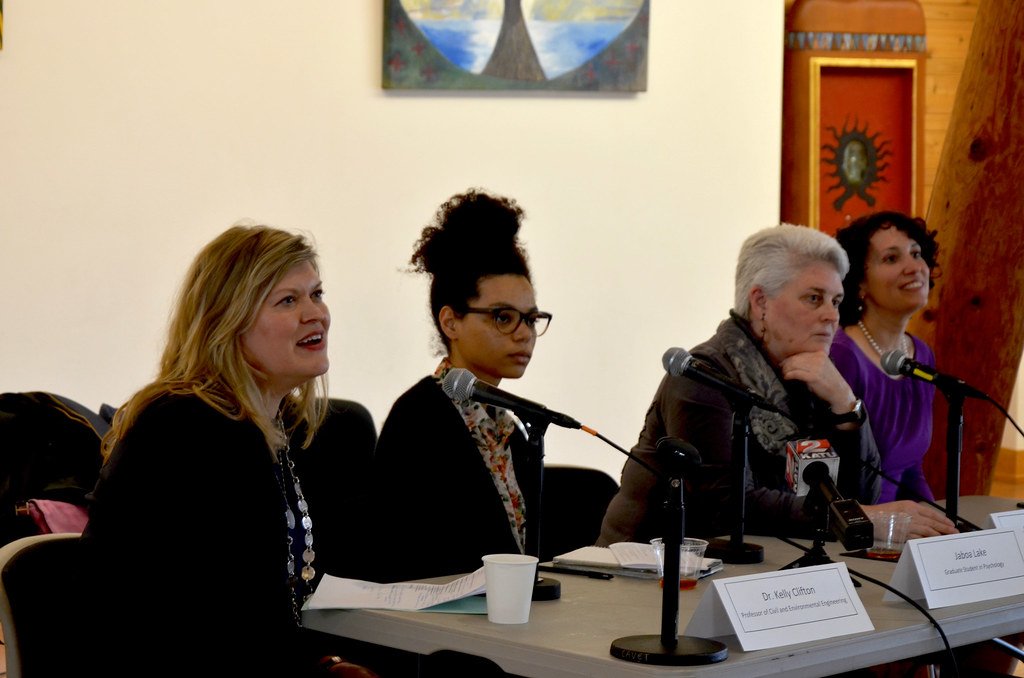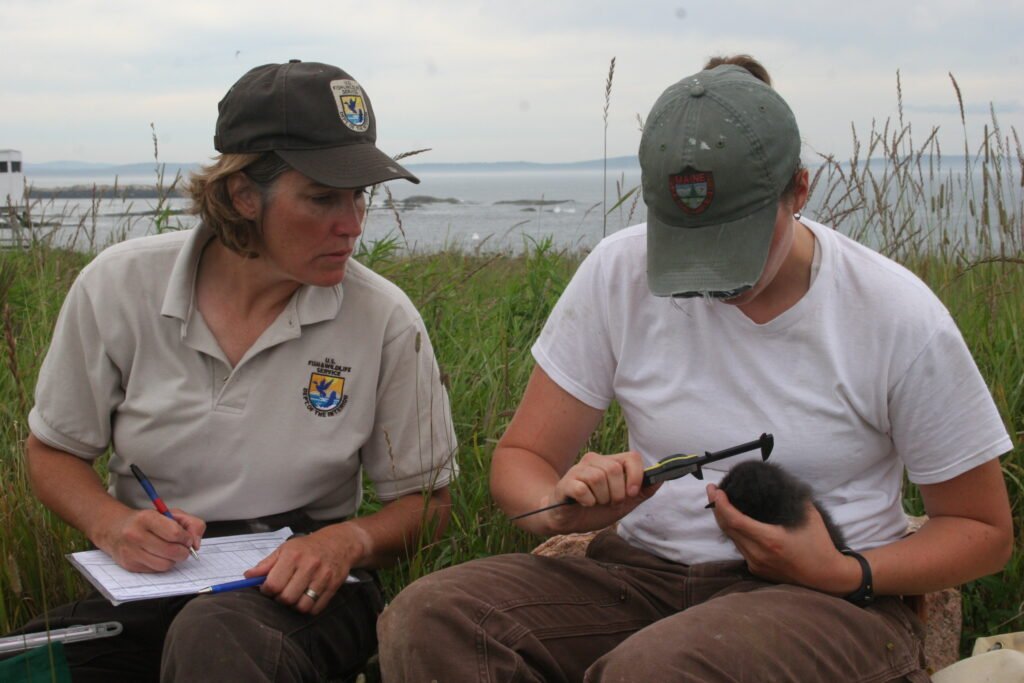In laboratories across the globe, a quiet revolution is reshaping the future of scientific discovery. While news headlines often focus on breakthrough technologies and Nobel Prize winners, a more profound transformation is happening beneath the surface. Women of color are breaking through centuries-old barriers, bringing fresh perspectives to research that’s solving humanity’s greatest challenges. From developing life-saving vaccines to unlocking the mysteries of black holes, these brilliant minds are proving that diversity isn’t just about fairness – it’s about better science. Their stories reveal how different backgrounds and experiences fuel innovation in ways that homogeneous teams simply cannot achieve.
The Numbers Tell a Stunning Story

The statistics paint a picture that would shock most people. Despite making up nearly 40% of the US population, women of color represent less than 10% of the science workforce. In physics and engineering, the numbers drop to a staggering 2-3%. Yet when these scientists do enter the field, their impact is disproportionately large. Studies show that research teams with diverse leadership produce more innovative solutions and have higher citation rates. It’s like having a secret weapon that most institutions are barely using. The contrast becomes even more striking when you realize that women of color earn science degrees at impressive rates, but then face barriers that push them out of academic and research careers.
Breaking Barriers in Biotechnology

Dr. Kizzmekia Corbett became a household name during the pandemic, but her groundbreaking work on mRNA vaccine technology started years before COVID-19 hit. As an African American immunologist, she faced skepticism early in her career that would have derailed someone with less determination. Her research team at the National Institutes of Health was instrumental in developing the Moderna vaccine in record time. What makes her story even more remarkable is how her unique perspective helped address vaccine hesitancy in communities of color. She understood the historical reasons for distrust and could communicate science in ways that built bridges instead of walls. Her work literally saved millions of lives while demonstrating how representation matters in public health.
Astronomical Achievements Against All Odds

When Dr. Katie Bouman led the team that produced the first image of a black hole, she shattered expectations about who gets to explore the universe. The MIT computer scientist developed the algorithms that made this seemingly impossible feat achievable. But her journey wasn’t easy – she faced constant questions about her qualifications and had to prove herself repeatedly in male-dominated physics departments. Her breakthrough required not just technical brilliance but also creative problem-solving that came from thinking differently about complex challenges. The iconic black hole image became a symbol of what’s possible when barriers are removed. Her success inspired countless young women of color to pursue careers in astrophysics and computer science.
Environmental Science Gets a Much-Needed Perspective

Climate change doesn’t affect everyone equally, and Dr. Ayana Elizabeth Johnson understood this long before it became mainstream knowledge. As a marine biologist and climate policy expert, she’s been highlighting how environmental issues disproportionately impact communities of color. Her research on ocean conservation combines hard science with social justice, creating solutions that actually work for real people. She co-founded Ocean Collective, an organization that brings together diverse voices to tackle marine conservation challenges. Her approach proves that environmental science becomes more effective when it includes perspectives from those most affected by environmental problems. Think of it as adding crucial missing pieces to a puzzle that scientists have been trying to solve for decades.
Medical Research Finally Reflects Real Patients

For too long, medical research suffered from a dangerous blind spot – most studies were conducted on white male subjects, then applied to everyone else. Dr. Linda Goler Blount recognized this problem and dedicated her career to changing it. As a public health researcher, she’s shown how genetic, environmental, and social factors affect health differently across racial groups. Her work on cardiovascular disease in African American women revealed treatment approaches that work better than traditional protocols. She’s also pioneered community-based research methods that involve patients as partners rather than just subjects. Her approach is like finally using the right prescription glasses after years of blurry vision – suddenly, the health picture becomes crystal clear.
Technology Innovation Through Different Lenses

Dr. Timnit Gebru was making waves in artificial intelligence long before her high-profile departure from Google made headlines. As an Ethiopian-American computer scientist, she brought critical perspectives to AI development that others missed. Her research on algorithmic bias revealed how facial recognition systems work poorly on darker skin, exposing serious flaws in widely-used technology. She also investigated how AI language models perpetuate harmful stereotypes, work that became even more relevant with the rise of ChatGPT and similar tools. Her advocacy for ethical AI development challenged the tech industry to consider consequences beyond profit margins. Even when facing pushback from powerful institutions, she continued highlighting how technology reflects the biases of its creators.
Chemistry Labs Welcome Fresh Approaches

Dr. Raychelle Burks brings an unconventional background to forensic chemistry that makes her work uniquely valuable. Growing up watching crime shows, she never saw scientists who looked like her, but that didn’t stop her from pursuing analytical chemistry. Her research focuses on developing portable chemical sensors that can detect drugs and explosives in the field. What sets her apart is how she communicates science through popular culture, making complex chemistry accessible to diverse audiences. She’s appeared on numerous TV shows and podcasts, breaking down the real science behind fictional crime scenes. Her work proves that scientific excellence and public engagement aren’t mutually exclusive – they actually strengthen each other.
Materials Science Gets a Makeover

Dr. Ainissa Ramirez transformed from a materials scientist at Bell Labs to a science evangelist who makes physics fun for everyone. Her Dominican-American heritage influenced her approach to explaining complex concepts through everyday examples that resonate with diverse communities. She’s developed new materials for electronics while also writing books and hosting shows that demystify science for general audiences. Her research on shape-memory alloys led to innovations in everything from medical devices to spacecraft components. But perhaps her greatest contribution is showing young people of color that they belong in science laboratories. She’s like a translator who speaks both the language of cutting-edge research and the language of the streets.
Neuroscience Discovers New Neural Pathways

Dr. Kafui Dzirasa is rewiring how we understand the brain, both literally and figuratively. As an African American psychiatrist and neuroscientist at Duke University, he studies how social experiences affect brain function. His research uses advanced techniques to examine how stress and trauma create lasting changes in neural circuits. What makes his work revolutionary is connecting laboratory findings to real-world experiences of marginalized communities. He’s shown how chronic stress from discrimination can alter brain chemistry in ways that affect mental health for generations. His findings are helping develop more effective treatments for depression and anxiety in communities that have been underserved by traditional psychiatry.
Data Science Uncovers Hidden Patterns

Dr. Cynthia Rudin is proving that machine learning doesn’t have to be a black box that nobody understands. As a computer scientist focused on interpretable AI, she’s developing algorithms that can explain their decision-making process. Her work is particularly crucial in high-stakes areas like criminal justice and healthcare, where biased algorithms can have devastating consequences. She’s shown how seemingly objective data often reflects historical inequalities, leading to AI systems that perpetuate discrimination. Her research team has created tools that help detect and correct these biases before they cause harm. Think of her as a detective who not only solves crimes but also explains exactly how she cracked the case.
Agricultural Science Grows New Solutions

Dr. Jeannie Economos has spent her career fighting for farmworkers while advancing agricultural science in ways that benefit everyone. As a public health researcher with Puerto Rican roots, she understood how pesticide exposure disproportionately affects Latino communities. Her studies documented health impacts that were being ignored by mainstream agricultural research. She developed safer farming practices that protect workers while maintaining crop yields. Her work also focuses on climate adaptation strategies that help small-scale farmers survive extreme weather events. Her approach proves that agricultural science becomes more innovative when it considers the needs of all stakeholders, not just large agribusiness.
Psychology Expands Its Understanding

Dr. Beverly Daniel Tatum revolutionized how psychology approaches racial identity development through research that was both groundbreaking and deeply personal. Her work on racial identity formation in children and adolescents filled massive gaps in psychological theory. She showed how positive racial identity development is crucial for academic success and mental health in students of color. Her research methods included innovative approaches like using literature and storytelling to understand psychological processes. As a college president, she also demonstrated how diverse leadership transforms entire institutions. Her work is like adding color to a black-and-white photograph – suddenly, the full picture becomes visible.
Engineering Builds Bridges to the Future

Dr. Aprille Ericsson became the first African American woman to receive a PhD in mechanical engineering from Howard University, then went on to design spacecraft at NASA. Her work on Mars missions and satellite systems pushed the boundaries of what’s possible in space exploration. She approached engineering challenges with creative problem-solving techniques that drew from her diverse experiences and perspectives. Her mentorship of young engineers has created a pipeline of diverse talent in aerospace. She’s also been a vocal advocate for making engineering more inclusive and accessible to underrepresented students. Her career shows how breaking barriers in one area creates opportunities for countless others to follow.
Geology Rocks the Foundations

Dr. Claudia Alexander led some of NASA’s most ambitious planetary missions before her death in 2015, but her legacy continues to inspire new generations of Earth scientists. As an African American geophysicist, she specialized in studying Jupiter’s moons and Saturn’s rings using data from spacecraft like Galileo and Cassini. Her research revealed new understanding about how planets and moons form and evolve over billions of years. She was known for her ability to ask the right questions that led to breakthrough discoveries about our solar system. Her work demonstrated how bringing different perspectives to scientific problems can lead to insights that might otherwise be missed. She literally helped rewrite textbooks about planetary formation.
Public Health Saves Lives Through New Approaches

Dr. Camara Phyllis Jones has transformed how we understand racism as a public health issue through research that bridges social science and epidemiology. Her three-levels framework for understanding racism – institutionalized, personally mediated, and internalized – became a standard tool for public health professionals. Her work showed how discrimination literally gets under the skin, causing measurable health disparities through stress and limited access to resources. She’s trained thousands of health professionals to recognize and address these patterns in their work. Her research methods combine rigorous statistical analysis with community engagement that produces actionable solutions. She’s essentially provided a roadmap for making public health truly public.
Mathematics Calculates New Possibilities

Dr. Evelyn Boyd Granville broke barriers as one of the first African American women to earn a PhD in mathematics, then went on to work on NASA’s space programs. Her calculations helped ensure that astronauts could safely travel to space and return to Earth. She developed computer programs and mathematical models that were crucial for early space missions. Later in her career, she became a passionate educator who inspired countless students to pursue mathematics. Her work showed how mathematical excellence can come from anywhere and contribute to humanity’s greatest achievements. She proved that diversity in mathematics isn’t just about representation – it’s about bringing different approaches to solving complex problems.
The Ripple Effect Continues

The impact of women of color in science extends far beyond their individual achievements, creating waves that transform entire fields and institutions. Their presence in leadership positions changes research priorities, funding decisions, and the questions that get asked in the first place. Young students see role models who look like them and suddenly realize that science careers are possible. Universities and companies are finally recognizing that diverse teams produce better results and are actively working to recruit and retain talent from all backgrounds. International collaborations are becoming more inclusive, bringing together scientists from different cultures and perspectives to tackle global challenges. The change is happening faster than many expected, suggesting that the tipping point for true inclusion in science may be closer than we think.
What This Means for the Future

The transformation happening in science today will shape discoveries for generations to come, as diverse perspectives become the norm rather than the exception. Climate change solutions will be more effective because they’ll consider impacts on all communities, not just privileged ones. Medical treatments will work better for everyone because research will include diverse populations from the beginning. Technology will be designed with equity in mind, preventing harmful biases before they cause damage. Space exploration will benefit from creative approaches that emerge when teams include people with different backgrounds and experiences. The pipeline of young scientists entering the field is becoming more diverse each year, suggesting that this transformation will accelerate. What started as breaking barriers has become building bridges to a more innovative and inclusive scientific future.
The quiet revolution in science laboratories isn’t just changing who gets to be a scientist – it’s changing what science can accomplish. When brilliant minds from all backgrounds work together, they solve problems that seemed impossible and discover solutions that benefit everyone. These women of color haven’t just broken through barriers; they’ve proven that diversity isn’t just morally right, it’s scientifically essential. As more institutions embrace this reality, we’re witnessing the beginning of what might be the most innovative period in human scientific history. Did you expect that the future of science would look so different from its past?



